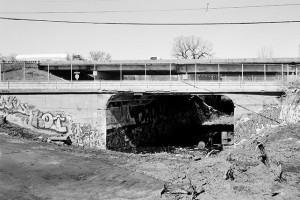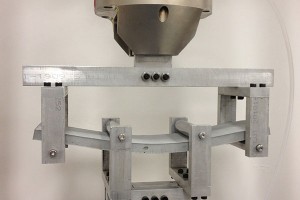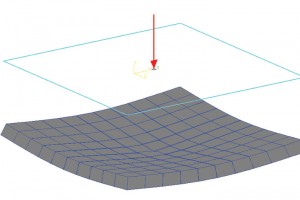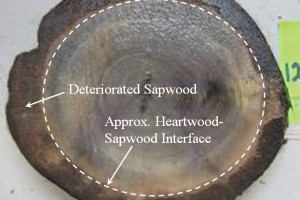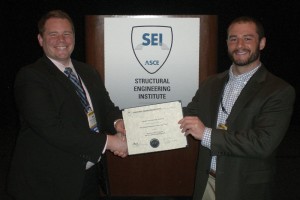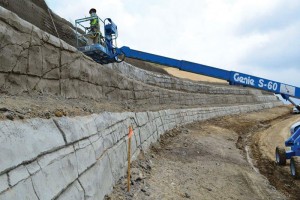Last spring, I had the opportunity to attend one of the several terrific presentations that were part of the CASE Risk Management Convocation at the 2013 Structures Congress. This session was presented by James Parker and Pedro Sifre of Simpson, Gumpertz, and Heger, and I thank them for allowing me to present a portion of it to a wider audience. …
Review Category : Articles
Two days of expected work turned into a week; one equipment breakdown cascaded into another; a 30-minute delay became 24 hours. A documentation project that was scheduled to happen in June did not begin until September. The challenges of keeping a bridge demolition project on schedule are not unique, but the requirement for historical documentation of a 1912 reinforced concrete bridge by historians and engineers added another layer of complexity to a highway widening project. However, this documentation effort ultimately provided interesting information about the early development of reinforced concrete flat slab design. …
The most important concrete property in the ACI 318 Building Code is compressive strength. This reflects the notion of using concrete as a strong material against compressive stress in structural members. Tensile forces are expected to be carried by prestressing or reinforcing steel. These fundamental structural design concepts of putting concrete in compression and steel in tension have largely worked very well. …
Probably the most widely used value in a soil report is soil bearing capacity. The obvious reason is that basic examples given in most text books almost always use bearing capacity to calculate the plan dimension of a footing. Because of simplicity and ease of use, this method is still the fundamental soil parameter for foundation design. However, that simplicity assumes the footing will behave as a rigid body. That particular assumption works well in practice for small and single column footings. But for large and multi column foundations, most engineers prefer flexible analysis. …
The use of untreated timber piles as foundation support in Europe and the U.S became more wide-spread at the end of the 19th century and beginning of the 20th century, when industrialization led to the rapid expansion of urban areas. Their use was common in regions with natural soft soils, or where urban-fill was used for land development, such as in the northeastern U.S. Thousands of historic structures across Europe and the U.S. currently remain supported on untreated timber piles; their continued use and maintenance costs highly depend on the condition of the piles after tens or hundreds of years of in-ground service. …
For many decades, Structures Congress has been bringing together a national, international and diverse community of structural engineers to advance the practice within buildings, bridges, and non-building structures. Over the years, this annual event attracts more than 1,200 attendees from practice, academia, government, industry, and allied fields and has grown to become the premier event for all structural engineering professionals. Structures Congress 2014 is in Boston on April 3-5. …
Structural Forum is intended to stimulate thoughtful dialogue and debate among structural engineers and other participants in the design and construction process. Any opinions expressed in Structural Forum are those of the author(s) and do not necessarily reflect the views of NCSEA, CASE, SEI, C3Ink, or the STRUCTURE® magazine Editorial Board.
Most of us would agree that simplicity is an admirable characteristic of design. Indeed, simplicity has historically been considered a virtue. This article considers the question of simplicity in structural engineering practice. It concludes by critiquing the advancement of the profession in the area of design specifications. …
When a line is drawn on paper, what does it mean?
Retaining walls are usually drafted as a simple line on plans by the architect or engineer, with little direction other than a note: “Retaining wall design and construction by others.” …
For most of us, the provisions for development length and lap splices of reinforcing steel are taken from ACI 318-11, Table 12.2.2. From this, we can surmise that basic development lengths (ld) follow the form:
ld = ([pmath]1/25[/pmath], [pmath]1/20[/pmath], [pmath]3/50[/pmath], or [pmath]3/40[/pmath]) [pmath]{{f_y}{Psi_t}{Psi_e}lambda}/sqrt{f ‘_c}[/pmath] db …
The Buckner Companies Home Office
Stewart was an Award Winner for the Buckner Companies Home Office project in the 2012 NCSEA Annual Excellence in Structural Engineering awards program (Category – New Buildings under $10M).
Life in the building construction industry is a struggle between aesthetics and efficiency, a balancing act of benefits and costs. …


